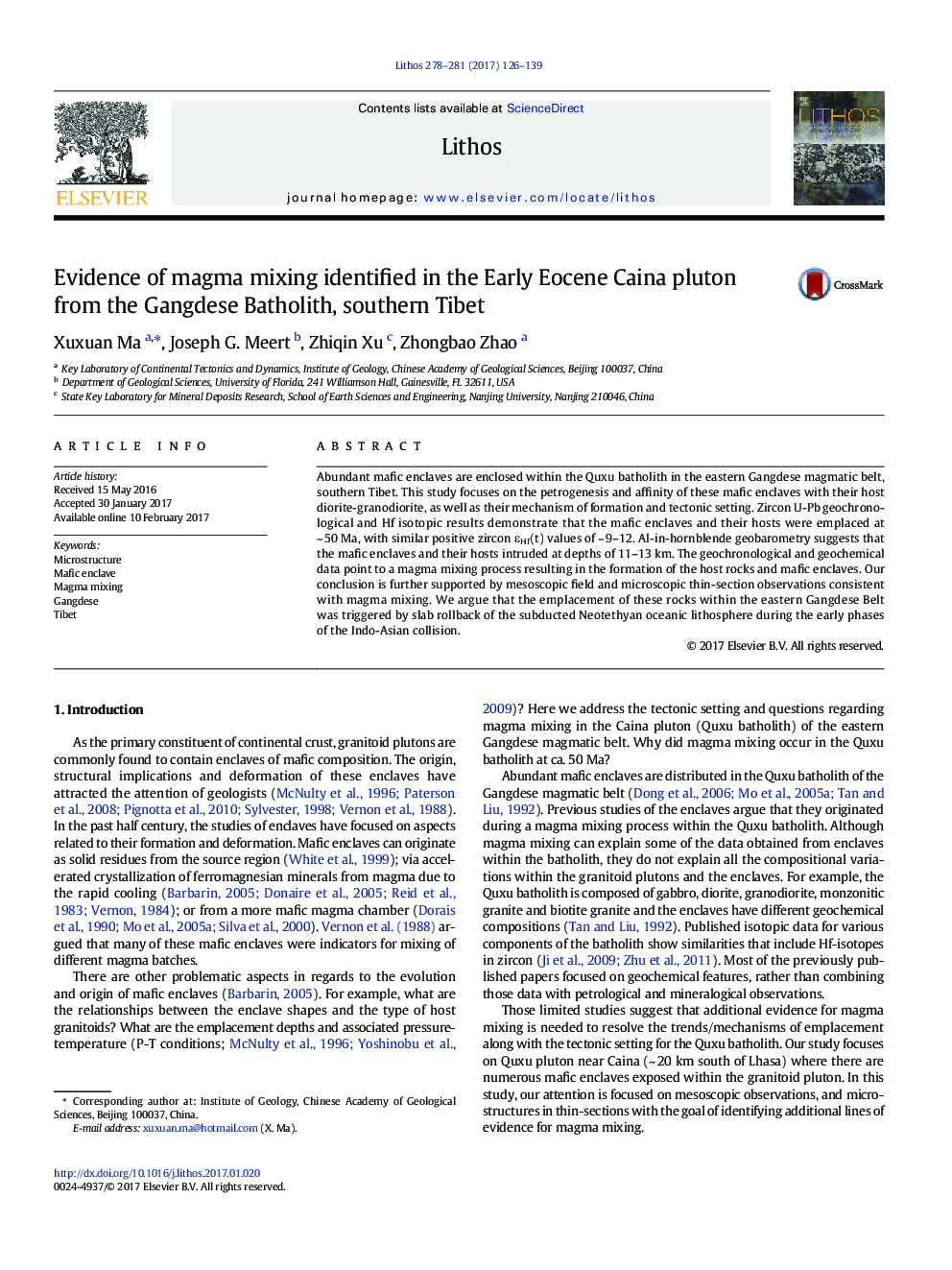| Article ID | Journal | Published Year | Pages | File Type |
|---|---|---|---|---|
| 5784159 | Lithos | 2017 | 14 Pages |
â¢Microstructural evidence is found for Early Eocene magma mixing.â¢Mechanisms of magma mixing and emplacement are proposed.â¢Ca. 50 Ma magma mixing took place in the early stage of Indo-Asian collision.
Abundant mafic enclaves are enclosed within the Quxu batholith in the eastern Gangdese magmatic belt, southern Tibet. This study focuses on the petrogenesis and affinity of these mafic enclaves with their host diorite-granodiorite, as well as their mechanism of formation and tectonic setting. Zircon U-Pb geochronological and Hf isotopic results demonstrate that the mafic enclaves and their hosts were emplaced at ~ 50 Ma, with similar positive zircon εHf(t) values of ~ 9-12. Al-in-hornblende geobarometry suggests that the mafic enclaves and their hosts intruded at depths of 11-13 km. The geochronological and geochemical data point to a magma mixing process resulting in the formation of the host rocks and mafic enclaves. Our conclusion is further supported by mesoscopic field and microscopic thin-section observations consistent with magma mixing. We argue that the emplacement of these rocks within the eastern Gangdese Belt was triggered by slab rollback of the subducted Neotethyan oceanic lithosphere during the early phases of the Indo-Asian collision.
Graphical abstractDownload high-res image (844KB)Download full-size image
